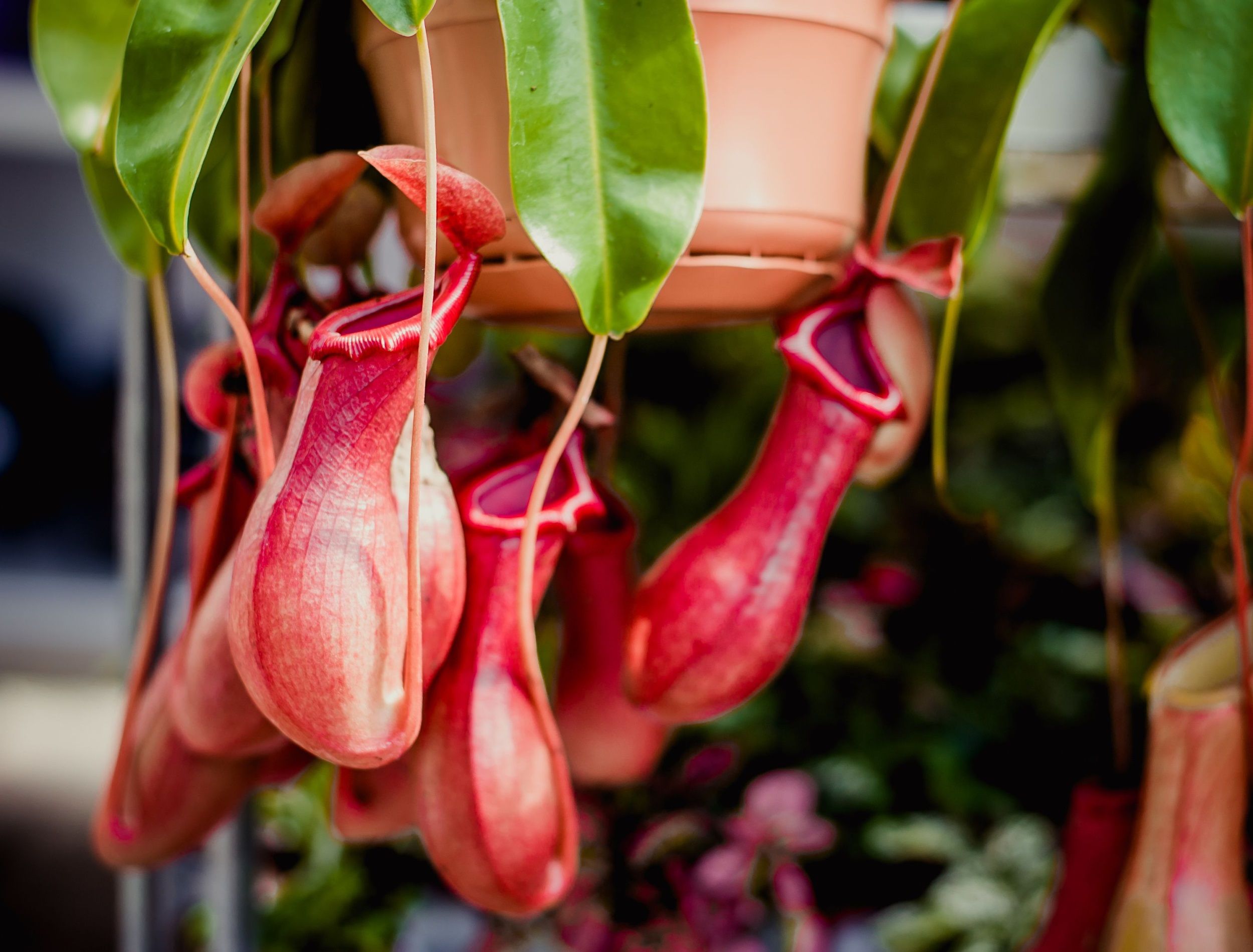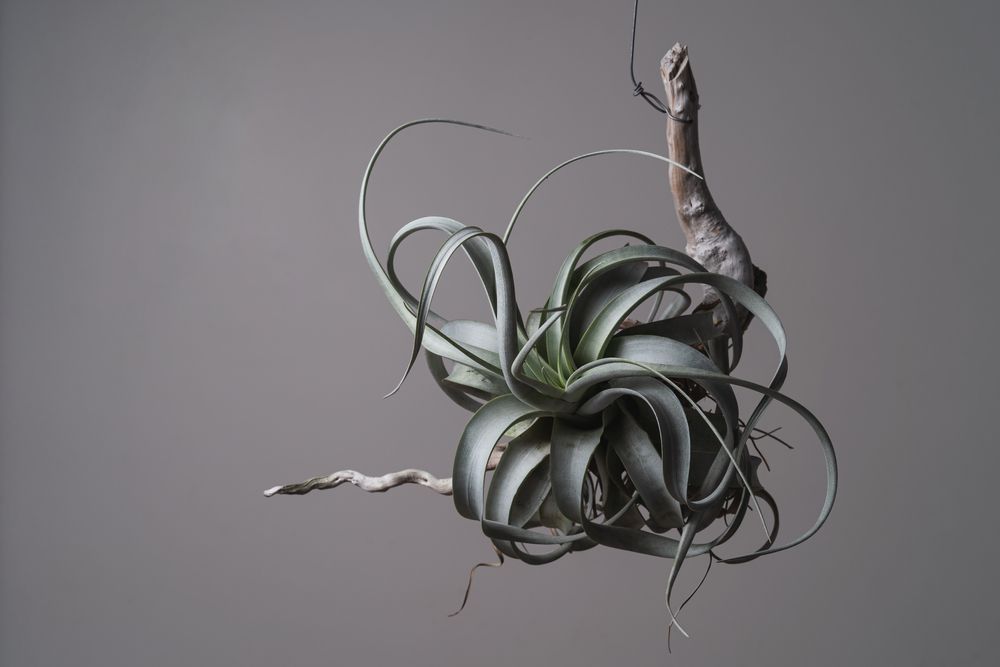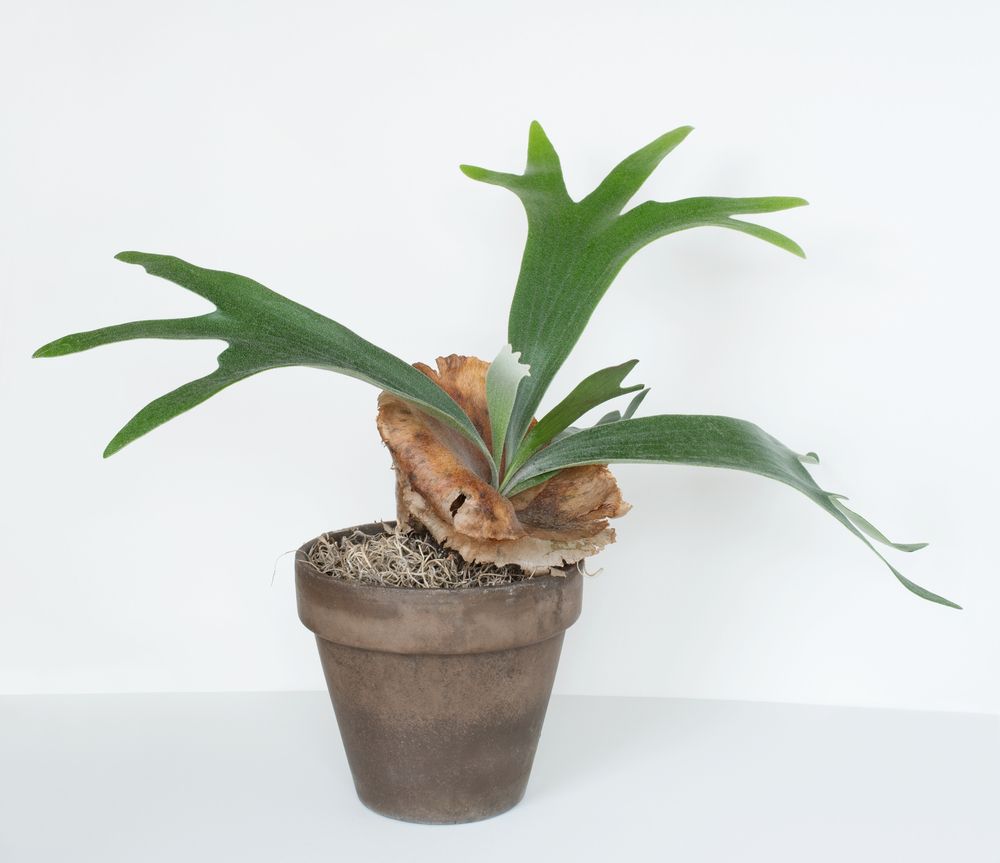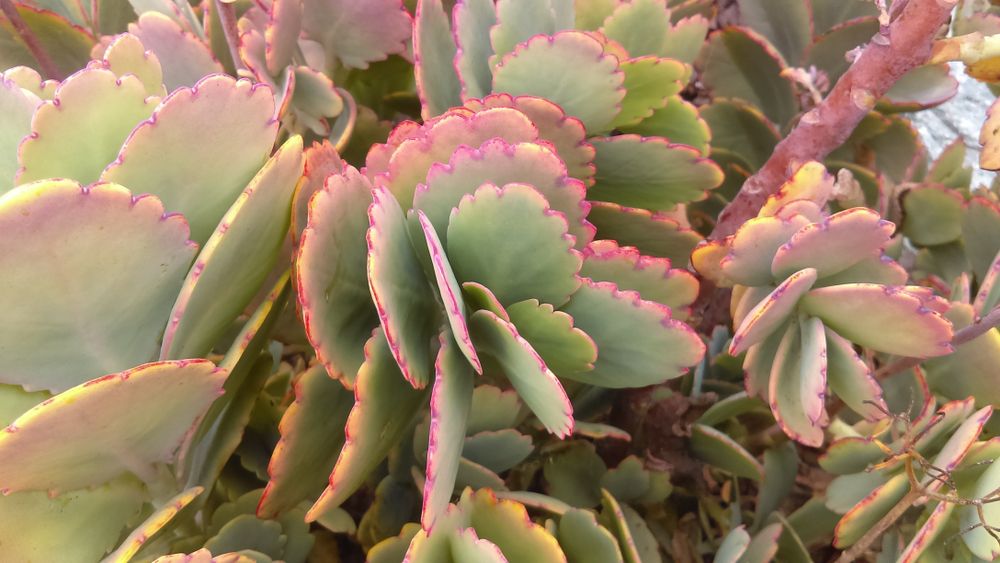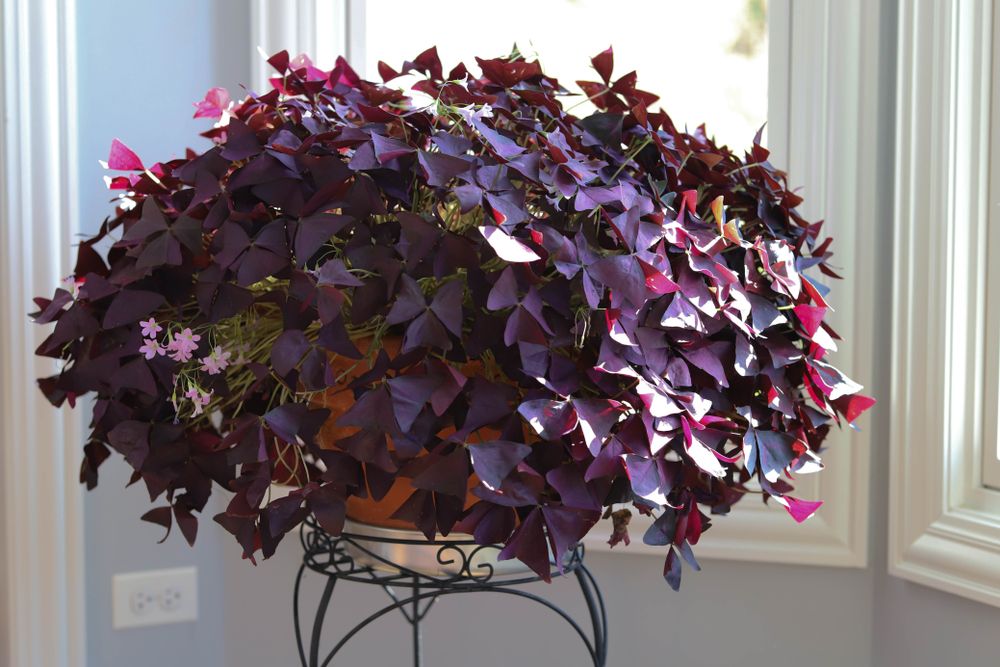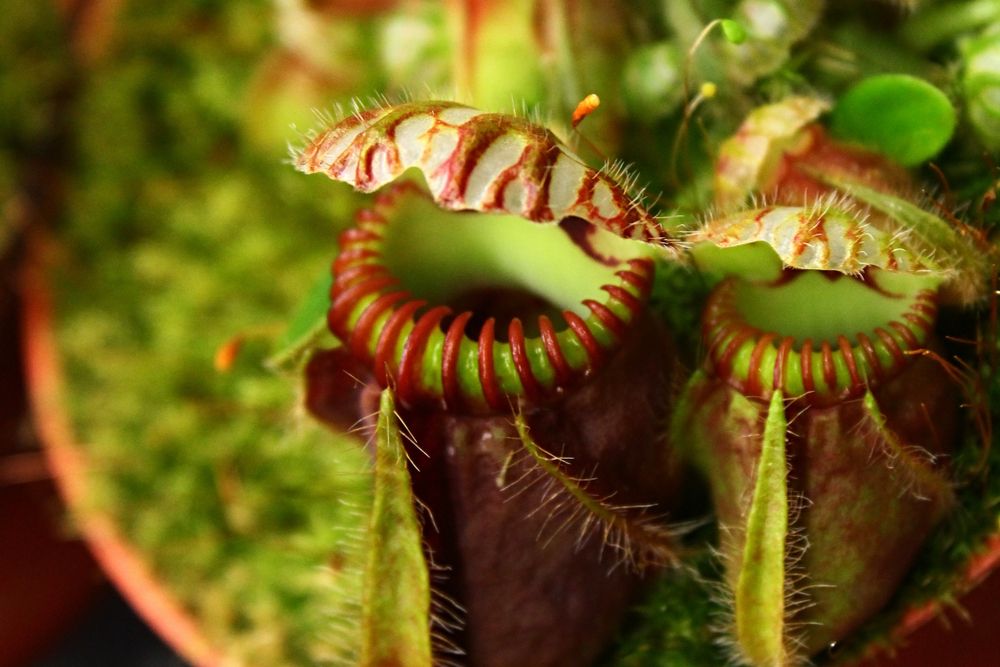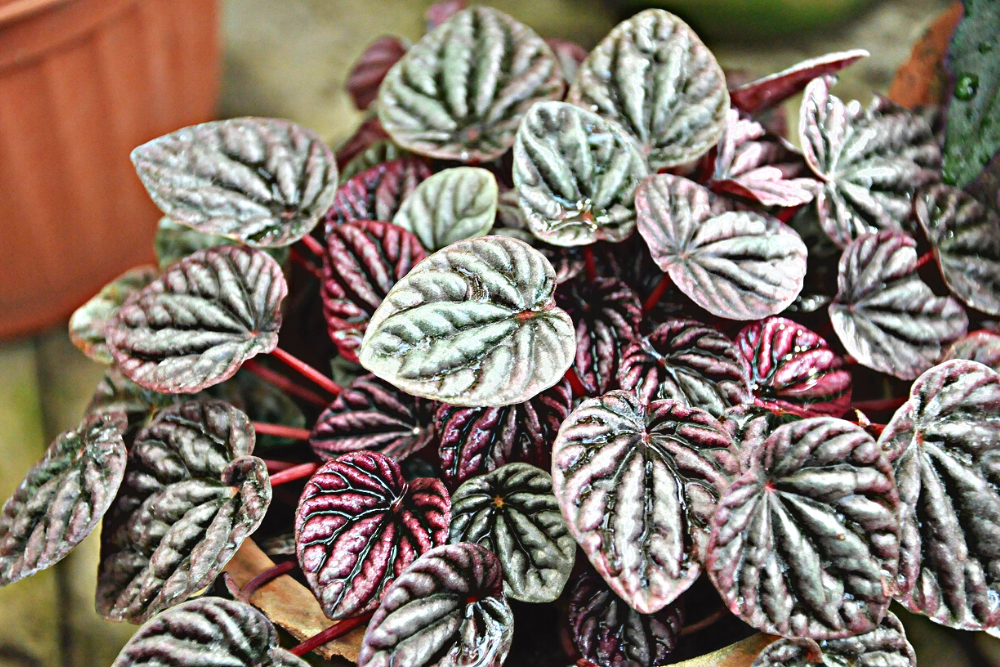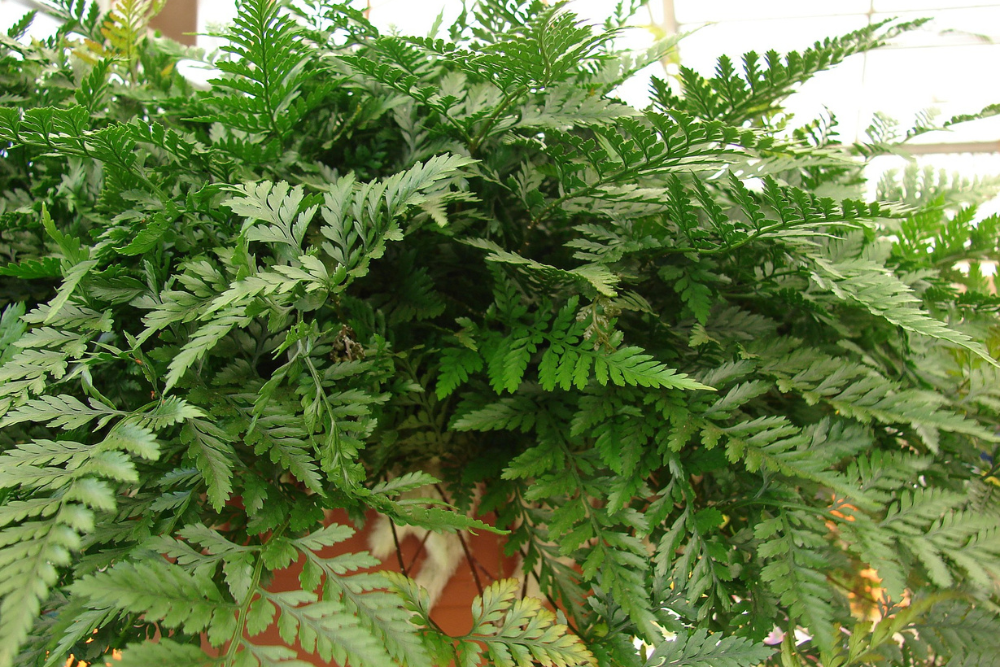Looking to add a bit of life and greenery to your humble abode? Houseplants are an easy way to elevate the atmosphere of a home or garden, while also providing proven health benefits. But, why stop at the same old green foliage found in most stores?
Whether you're passionate about houseplant collecting or just looking for something eye-catching, there is no shortage of options when it comes to unique houseplants. Read on to discover seven remarkable plants with special features from one end of the spectrum to another!
Xerographica
Image credits: mokjc via Shutterstock
'Xerographica' is an eye-catching houseplant that features long, thin leaves with striking silver stripes. This air plant has a distinctive look, making it stand out from other plants in your home. Not only does it have an attractive appearance, but its slow growth rate allows you to enjoy it for years to come. It's also great for those living in Mediterranean, subtropical, and desert climates. However, you can also keep your 'Xerographica' as a houseplant with some care.
If you choose to keep 'Xerographica' as a houseplant, keep it away from any type of ventilation, like AC units and heaters, and avoid direct sunlight. Instead, this air plant prefers half shade to full shade with a touch of light. Because 'Xerographica' is sensitive to hard water, spray it with distilled or rainwater.
Pro Tip: This plant is epiphyte meaning it soaks up water through its leaves. To water these types of plants soak them for 10 to 20 minutes every other week. After you give it water, the plant needs time to dry out before being put back in its desired spot.
Staghorn Ferns
Image credits: Staghorn Fern in Brown Clay Pot via Shutterstock
The Staghorn fern is an incredibly unique houseplant that's sure to draw attention. With its antler-like fronds and lush green foliage, this tropical species is a must-have for those who like to stand out from the crowd.
Native to Southeast Asia, Africa, and Australia, the Staghorn fern thrives best in strong, indirect light and prefers a moist environment. These plants take in water from their surroundings, absorbing water from both their fronds and roots. So, be careful of overwatering as it can cause root rot. Keep the soil evenly moist and allow the soil to dry out between waterings.
They do best when kept at temperatures up to 75 degrees Fahrenheit, with a minimum temperature of 45 degrees Fahrenheit with moderate humidity. Place your plant in an airy, well-ventilated room, and consider mist spraying once daily for warm rooms.
Lavender Scallops
Image credits: Erika Kirkpatrick via Shutterstock
Lavender scallops make a great statement piece in your indoor area. Native to Madagascar, this succulent features large rosettes, variegated pinkish-purple leaves, and red-brown flowers that bloom in the spring or summer. Plus, it's relatively low maintenance, making it great for all levels of gardeners!
This plant prefers partial sun to partly shaded areas, so you can easily place it in your bedroom without worrying about scorching its leaves from strong light. With a height ranging between 1 to 2 feet, this gorgeous succulent won't take up much space either. It's also a relatively hardy plant, able to withstand temperatures as low as 55 degrees Fahrenheit.
When it comes to watering, you'll want to do so modestly in the summer and lessen the frequency during the winter months. Letting the soil surface dry out between waterings is also important. As for fertilizer, feed your plant bi-weekly with a liquid fertilizer in the summer.
Purple Shamrock
Image credits: Molly Shannon via Shutterstock
The Purple Shamrock is an incredibly distinct houseplant that will bring a touch of style and pizzazz to your home. Its scores of dark purple, triangular leaves create an eye-catching display against its small white or pink flowers.
This perennial sun lover loves moisture but requires well-draining soil. Keep it moist but not soaking! With a height range between 10 to 12 inches tall, this Brazilian native is the perfect size for a windowsill, tabletop display, or hanging basket bringing color and life to even the smallest spaces. The Purple Shamrock is easy to care for yet provides maximum impact indoors with its striking foliage and delicate blooms.
Pitcher Plant
Image credits: ZayacSK via Shutterstock
The Pitcher plant is an interesting type of carnivorous plant that has containers used for trapping prey. While this type of plant requires more attention than other varieties because of its need to feed on insects, the pitcher plant is still a great option to add interest and life to your home.
For best results, grow your pitcher plant in full sun conditions. That may be hard to accomplish inside the home. However, species such as S. psittacina, S purpurea, and S. rosea do better indoors. Keep the soil moist and sort of soggy. The most common way to water is to place the pot in a pool of 1-inch-deep distilled water, rainwater, or reverse osmosis water.
This carnivorous beauty requires three to five months of winter dormancy for optimal health. To ensure your pitcher plant enters and remains in a proper dormant state manage the light, temperature, and moisture levels accordingly. That means transitioning from bright direct sunlight to indirect light or shade as the days get shorter, reducing temperatures slightly, and allowing the soil to dry out between watering.
Pro Tip: Do not use tap water on this plant. For extra nutrition, you can feed your pitcher plant with dried crickets.
Peperomia
Image credit: Lazaregagnidze via Wikimedia Commons
Peperomia is a popular houseplant that features thick glossy leaves in various shades of green. It's a great pick for those who are looking to add some greenery but don't have so much space or light to spare.
When considering where to place your new Peperomia plant, choose an area that offers bright light without direct sunlight as this could cause leaf fade. This plant prefers moist soil but test the soil first before watering. When the soil dries out, water it thoroughly until moist all over. In wintertime, you may find that you need to water your plant less frequently.
Peperomia is sensitive to dry air. A humidifier will help this and misting it a few times per week can also benefit your plant. This plant likes to be root-bound, so repotting isn't necessary for several years.
When it comes to soil, use a loose, well-draining mix and you're all set!
Rabbit's Foot Fern
Image credit: Forest and Kim Starr via Wikimedia Commons
The Rabbit's Foot fern is a distinguishing houseplant that adds an ornamental touch to your interior. Its thick, tough shoots have hairy scales, giving them the appearance of rabbit feet -- hence the name!
Despite its unusual look, it's not that difficult to care for. It prefers partial shade and moist but well–draining soil with high humidity. The bright green, glossy leaves will add a lush and vibrant feel to your home or garden. This evergreen thrives indoors, making it perfect for those who want an attractive addition without having to tend to it too frequently.
Here to Make a Statement!
With so many unique houseplants available on the market today, there's no need to have a dull and boring indoor garden. By adding some of these interesting plants to your space, you can create an exotic and vibrant oasis that will be the talk of all your friends and family.
So, what are you waiting for? Choose one of these seven amazing plants and get started on your very own indoor garden today! And don't forget to share this article with all your plant-loving friends. Leave a comment below and let everyone know which of these houseplants is your favorite!

